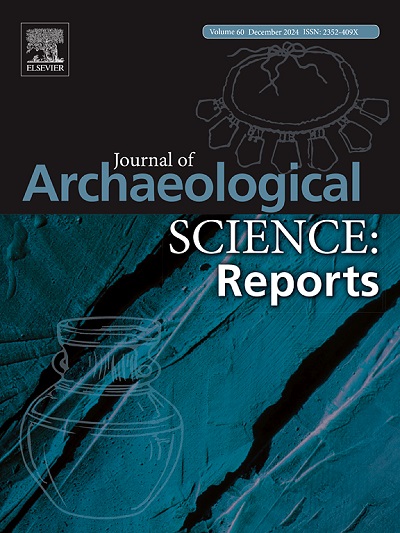人类学数据是波兰西波罗的海文化圈社区使用木材的文化差异的证据
IF 1.5
2区 历史学
0 ARCHAEOLOGY
引用次数: 0
摘要
我们收集了 15,000 多条记录,分析了迄今为止公布的与西波罗的海人活动有关的树木和灌木遗迹的所有分类测定结果,西波罗的海人在罗马铁器时代(公元 1 世纪至 4 世纪晚期)、移民时期(公元 4 世纪晚期至 6 世纪中/晚期)和中世纪早期(公元 10 世纪至 12 世纪晚期/13 世纪早期)居住在马祖里湖区和立陶宛湖区(波兰东北部)。该分析包括来自 20 个考古遗址的人类学数据,这些遗址分别代表了博加泽沃文化、苏多维文化、奥尔什京群和中世纪早期约特文尼亚的聚落。研究的目的是捕捉和描述西波罗的海文化圈内相邻文化在使用木材方面的差异,这些文化在地区和年代上都拥有相似的原材料基础。前者在日常生活和丧葬仪式中都依赖落叶树,主要是桦树、橡树和桤木。相比之下,苏多维文化主要使用松树、云杉和紫杉等软木。在葬礼的火葬台上,这些社区表现出对特定类型木材的明显偏爱:博加泽沃文化偏爱桦木,苏多维文化偏爱松木。这种偏好可能与这些树木在波罗的海民族的神话和民间传说中的象征意义,以及它们独特的外观和生长习性有关。尽管橡木在古普鲁士人的宗教习俗中占有重要地位,但火葬中却没有使用橡木,这可能是由于精神领域的禁令所致。本文章由计算机程序翻译,如有差异,请以英文原文为准。

Anthracological data as evidence of cultural distinctions in wood usage by communities from the Western Baltic cultural circle in Poland
More than 15,000 records were collected and analysed for all taxonomic determinations of tree and shrub remnants published to date, associated with the activities of the Western Balts, who inhabited the Masurian Lake District and the Lithuanian Lake District (NE Poland) during the Roman Iron Age (1st to late 4th century CE), the Migration Period (late 4th to mid/late 6th century CE) and the Early Middle Ages (10th to late 12th/early 13th century CE). The analysis included anthracological data from 20 archaeological sites, representing the settlements of the Bogaczewo culture, the Sudovian culture, the Olsztyn group and the early medieval Yotvingia.
The aim of the study was to capture and characterise the differences in the use of wood by neighbouring cultures within the Western Baltic cultural circle, who had a similar raw material base, both regionally and chronologically.
The analysis revealed significant differences in the use of available wood types between the Bogaczewo culture and the Sudovian culture. The former relied on deciduous trees, primarily birch, oak and alder, both in everyday life and during funerary rituals. In contrast, the Sudovian culture predominantly utilised softwoods such as pine, spruce and yew. For funeral pyres, these communities exhibited a marked preference for a specific type of wood: birch for the Bogaczewo culture and pine for the Sudovian culture. This preference was likely related to the symbolic significance of these trees in the mythology and folklore of the Baltic peoples, as well as their distinctive appearances and growth habits. The absence of oak wood for cremation, despite its central importance in the religious practices of the ancient Prussians, may have been due to prohibitions rooted in spiritual sphere.
求助全文
通过发布文献求助,成功后即可免费获取论文全文。
去求助
来源期刊

Journal of Archaeological Science-Reports
ARCHAEOLOGY-
CiteScore
3.10
自引率
12.50%
发文量
405
期刊介绍:
Journal of Archaeological Science: Reports is aimed at archaeologists and scientists engaged with the application of scientific techniques and methodologies to all areas of archaeology. The journal focuses on the results of the application of scientific methods to archaeological problems and debates. It will provide a forum for reviews and scientific debate of issues in scientific archaeology and their impact in the wider subject. Journal of Archaeological Science: Reports will publish papers of excellent archaeological science, with regional or wider interest. This will include case studies, reviews and short papers where an established scientific technique sheds light on archaeological questions and debates.
 求助内容:
求助内容: 应助结果提醒方式:
应助结果提醒方式:


